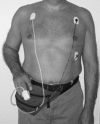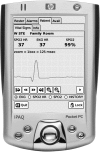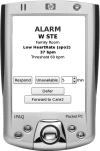SMART--an integrated wireless system for monitoring unattended patients
- PMID: 17947629
- PMCID: PMC2274866
- DOI: 10.1197/jamia.M2016
SMART--an integrated wireless system for monitoring unattended patients
Abstract
Monitoring vital signs and locations of certain classes of ambulatory patients can be useful in overcrowded emergency departments and at disaster scenes, both on-site and during transportation. To be useful, such monitoring needs to be portable and low cost, and have minimal adverse impact on emergency personnel, e.g., by not raising an excessive number of alarms. The SMART (Scalable Medical Alert Response Technology) system integrates wireless patient monitoring (ECG, SpO(2)), geo-positioning, signal processing, targeted alerting, and a wireless interface for caregivers. A prototype implementation of SMART was piloted in the waiting area of an emergency department and evaluated with 145 post-triage patients. System deployment aspects were also evaluated during a small-scale disaster-drill exercise.
Figures






References
-
- Welch Allyn® Micropaq® Monitor Model Micropaq® Monitor (ECG/SpO2)Directions for use. Available at:http://www.welchallyn.com/documents/Patient%20Monitoring/Continuous%20Mo... Sep 27, 2007.
Publication types
MeSH terms
Grants and funding
LinkOut - more resources
Full Text Sources
Other Literature Sources

